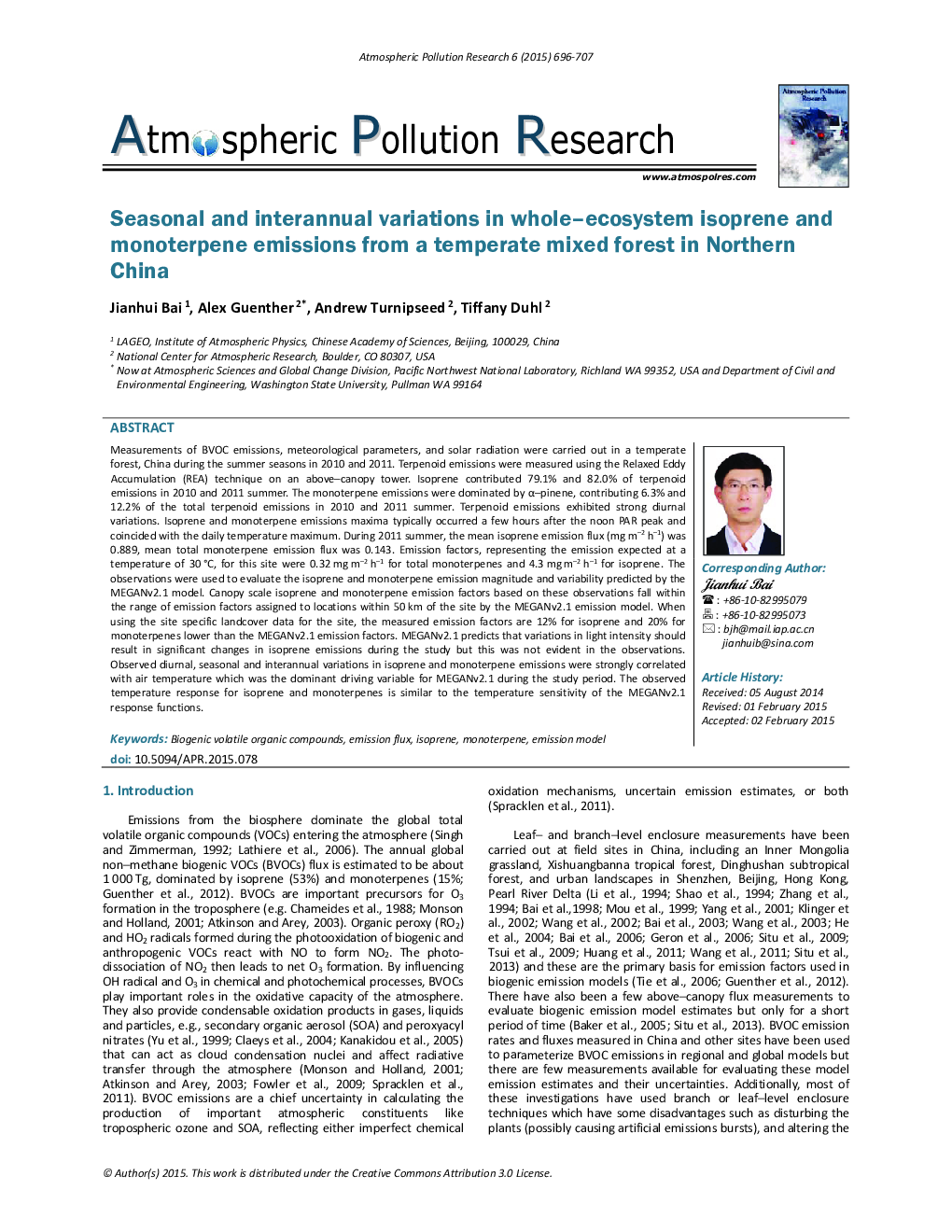| کد مقاله | کد نشریه | سال انتشار | مقاله انگلیسی | نسخه تمام متن |
|---|---|---|---|---|
| 4434829 | 1310528 | 2015 | 12 صفحه PDF | دانلود رایگان |
Contributed Measurements of BVOC emissions, meteorological parameters, and solar radiation were carried out in a temperate forest, China during the summer seasons in 2010 and 2011. Terpenoid emissions were measured using the Relaxed Eddy Accumulation (REA) technique on an above-canopy tower. Isoprene contributed 79.1% and 82.0% of terpenoid emissions in 2010 and 2011 summer. The monoterpene emissions were dominated by α–pinene, contributing 6.3% and 12.2% of the total terpenoid emissions in 2010 and 2011 summer. Terpenoid emissions exhibited strong diurnal variations. Isoprene and monoterpene emissions maxima typically occurred a few hours after the noon PAR peak and coincided with the daily temperature maximum. During 2011 summer, the mean isoprene emission flux (mg m–2 h–1) was 0.889, mean total monoterpene emission flux was 0.143. Emission factors, representing the emission expected at a temperature of 30 °C, for this site were 0.32 mg m–2 h–1 for total monoterpenes and 4.3 mg m–2 h–1 for isoprene. The observations were used to evaluate the isoprene and monoterpene emission magnitude and variability predicted by the MEGANv2.1 model. Canopy scale isoprene and monoterpene emission factors based on these observations fall within the range of emission factors assigned to locations within 50 km of the site by the MEGANv2.1 emission model. When using the site specific landcover data for the site, the measured emission factors are 12% for isoprene and 20% for monoterpenes lower than the MEGANv2.1 emission factors. MEGANv2.1 predicts that variations in light intensity should result in significant changes in isoprene emissions during the study but this was not evident in the observations. Observed diurnal, seasonal and interannual variations in isoprene and monoterpene emissions were strongly correlated with air temperature which was the dominant driving variable for MEGANv2.1 during the study period. The observed temperature response for isoprene and monoterpenes is similar to the temperature sensitivity of the MEGANv2.1 response functions.
Journal: Atmospheric Pollution Research - Volume 6, Issue 4, July 2015, Pages 696–707
